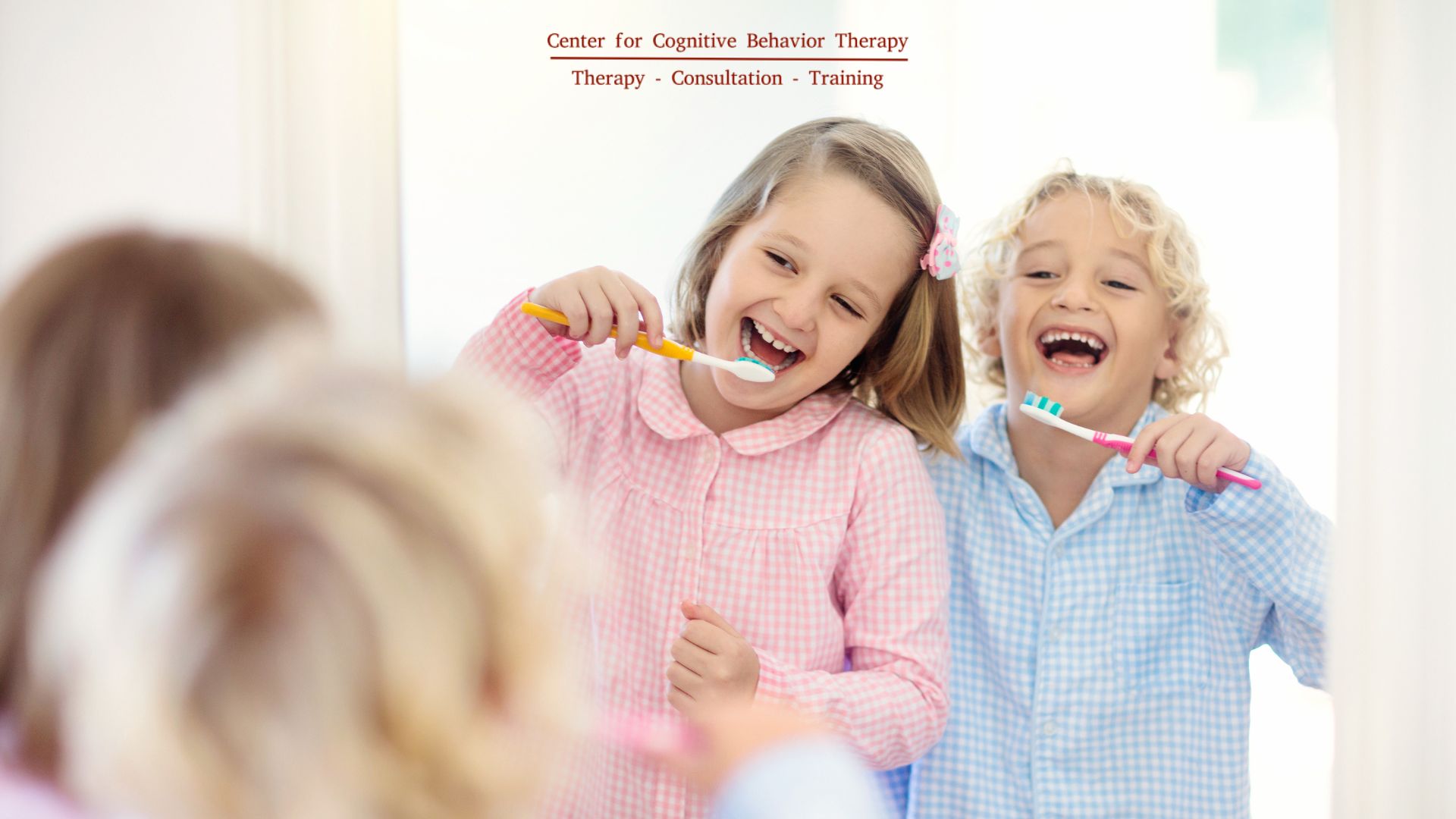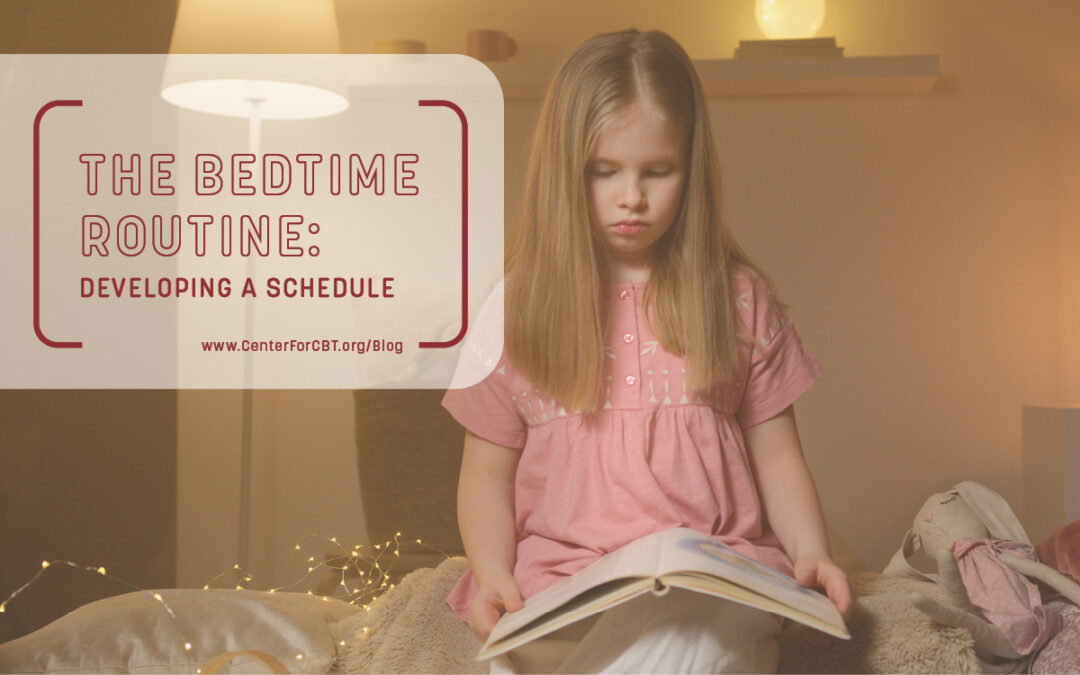The Importance of a Bedtime Routine: Developing a Schedule
A bedtime routine is a series of predictable activities with a start, middle, and end. To help build healthy habits, these should happen in the same order each night before a child falls asleep. One of the most obvious benefits of this routine is better sleep, which can help your child start the next day on the right foot. By implementing guidelines like an earlier bedtime and giving your child less time to actually fall asleep once in bed, children can experience fewer nighttime awakenings and spend longer periods asleep. As parents, we know how wonderful that is! But the benefits run much deeper than just improved sleep. An effective bedtime routine can set your child up for success later in life, too.
Benefits of a Bedtime Routine
Bedtime routines benefit not just children, but parents and caregivers as well. Implementing a bedtime routine has been shown to lead to improved parent mood and lower family stress levels. In the short-term, bedtime routines help kids relax, wind down, and prepare their body for sleep. In the long-term, they can lead to improved behavioral outcomes later in life— so the earlier you implement one, the better! Research shows that there are many benefits to having a consistent bedtime routine, which include:
- Improved sleep
- A stronger parent-child relationship
- Fewer behavioral challenges
- Lower levels of anxiety, anger, and fatigue
- Higher levels of school readiness
- Improved of dental health
- Increased emotion and behavior regulation
Practicing simple bedtime routine skills (e.g. brushing teeth, changing into pajamas, packing a backpack for the next day) are foundational building blocks to help your child learn more independence as they grow older. The bedtime routine gives your child the opportunity to practice healthy, helpful habits that they will need later in life. That structure and consistency is what helps regulate mood, behavior, and strengthen parent child relationships.

Guidelines for Creating an Effective Bedtime Routine
Generally speaking, routine is a great way to help your child practice new skills and learn how to be more organized. Although it can be difficult to get your child to start practicing these new skills, having a schedule can help. Having a set routine to refer to can help spare parents from being labeled as the “bad guy” at bedtime. When it’s time for bed, it’s due to the schedule! Whatever steps you put in place for your child’s bedtime routine, be sure to follow these key guidelines:
- Keep it Short. A bedtime routine can be anywhere from 15-60 minutes, depending on the age of the child and the activities involved. A bedtime routine should not be so long that it interferes with your child’s sleepiness and ability to go to bed.
- Start Before Getting Sleepy. The routine should be started close to bedtime when your child is awake enough to complete the routine, and timed so that they get sleepy by the time they need to lay down. Starting the routine when your child is too tired means they may end up being grumpy or hyperactive and have trouble following the steps. Consider how much sleep your child needs and use that time frame to help you determine when they should start their routine, when they should be in bed, and when they should be ready to fall asleep.
- Follow Recommended Sleep Times. The American Academy of Sleep Medicine has developed guidelines to help you understand how much sleep your child needs depending on their age. Sleeping too much or too little can have a negative impact on both physical health and mental health. Getting enough sleep is associated with improved behavior, learning, memory, attention, emotion regulation, mental health, and physical health. The recommended time frames for hours of sleep are:
- Ages 3-5: 10-13 hours per 24 hours (including naps)
- Ages 6-12: 9-12 hours per 24 hours
- Ages 13-18: 8-10 hours per 24 hours
- Be Consistent. The routine should be the same for whoever is putting your child to sleep— parent, grandparent, or nanny. The routine will change over time as your child ages but should be consistent from day to day in regard to timing and activities. It is important that children go to bed at the same time and wake up at the same time each day. This helps regulate a child’s circadian rhythm (also known as the “biological clock”) so that they begin to get tired around the same time each night and wake up around the same time each morning. Although it may be tempting to allow your child to go to bed later and wake up later on weekdays, research shows that children with inconsistent sleep schedules take longer to fall asleep. An irregular schedule may also mean that they fall asleep later and sleep less on weeknights compared to children with consistent sleep schedules.
Components of a Bedtime Routine
The components of a bedtime routine can vary depending on your child’s age. Each of the steps in their routine not only help them get ready for bed but help them practice important life skills to foster independence in adulthood. Below are some key components to consider including in your child’s bedtime routine at some point and why they are important:
- Putting on Pajamas. Just as we put on a different outfit for work or school, it’s also a good idea to put on clothes specific for sleeping. It helps children get comfortable and puts them in “bedtime mode” to complete the other components in their routine. This also teaches your child how to keep their space organized by either folding, hanging, or placing their worn clothes in the hamper.
- Night Time Hygiene. Before bed, your child should always brush their teeth and use the bathroom. Daily toothbrushing is a good habit to start young for long-term dental health. Using the bathroom before going to sleep reduces the likelihood of your child needing to get out of bed for a late-night trip to the bathroom.
- Preparing for the Next Day. Things like packing their backpack, packing their lunch, or choosing tomorrow’s outfit are all helpful preparatory steps for the next day that can be completed the night before. This teaches children to think ahead and can help the mornings feel calmer.
- Calm Down Activity. Once your child has completed all their necessary bedtime prep steps, a calm down activity can help them get ready for sleep. This activity should be appropriate for your child’s age and developmental level. It may include a bedtime story, independent reading time, special parent-child time (5-10 mins to connect about your child’s day), journaling, or listening to an audiobook or Reading aloud to or with young children is associated with improved language development, reading skills, and literacy. It can also facilitate improved communication between children and their parents. Special time with parents allows for one-on-one time to connect and helps to strengthen the parent child relationship. It also provides children with a consistent opportunity to confide in their parents in a calming setting.
- Goodnight and Lights Out. Once it’s time for your child to go to sleep, turn the lights out so that their body understands it is time to rest. The room should be dark, except for maybe a night light. You may even have the lights dimmed during the earlier steps of the bedtime routine to help your child slowly wind down.

Through all these steps, it’s recommended that children should avoid excessive stimulation. This means refraining from running around, playing high-energy games, and limiting screen time and/or use of electronics close to bedtime. Engaging in these behaviors close to bedtime has been linked to poor sleep, which means your child won’t gain all the bedtime routine benefits including fostering independence.
Examples of a Bedtime Routine
The order and components of a bedtime routine are flexible and customizable. It’s up to you to decide what will be most helpful for you and your child! To help them learn, practice, and memorize the routine, you might consider hanging a bedtime checklist in your child’s bathroom, their bedroom, or any place where it will be in sight and easy to reference. Until your child gets the hang of the routine, refer to the checklist together. This will help remind them of bedtime expectations and what steps they must follow. As your child ages, the routine may include more steps to help them learn new skills and practice independence. Below are some example bedtime checklists to help you develop a routine:
Young Children
- Put on pajamas.
- Brush teeth
- Bedtime story
- Goodnight and lights out.
School-Aged Children
- Prepare for the next day
- Put on pajamas
- Brush teeth
- Reading together, special parent-child time
- Goodnight and lights out
Adolescents
- Prepare for the next day
- Shower
- Put on pajamas
- Brush teeth
- Wind down time, depending on your teen’s preference
- Goodnight and lights out
Offering Support in a New Routine
There is no one-size-fits-all approach when it comes to developing and implementing a bedtime routine. Some kids may take to routine quickly, while others may need more guidance and reminders to help them learn. If implementing a routine all at once seems too difficult for your child, try focusing on one component at a time. Give them time to learn and let them gain consistency before incrementally introducing other components to the routine.
If bedtime continuously feels like a challenging point in the day despite your best efforts, you might consider seeking professional support. Working with a good CBT clinician who specializes in working with children and caregivers can help you address problem behaviors, practice clear communication, and learn effective strategies to enforce rules. They may also offer suggestions to adjust your bedtime routine. The skills a CBT clinician can teach not only help to establish a good routine but improve your relationship with your child. A bedtime routine is a great way to teach your child structure and gives you the opportunity to model good habits. As is the case with any new skill, forming good habits takes time and patience. Supporting your child with these smaller steps now will help them take bigger steps toward independence in the future! Parent child relationships are nurtured through the supportive environment created by consistent bedtime routines.


